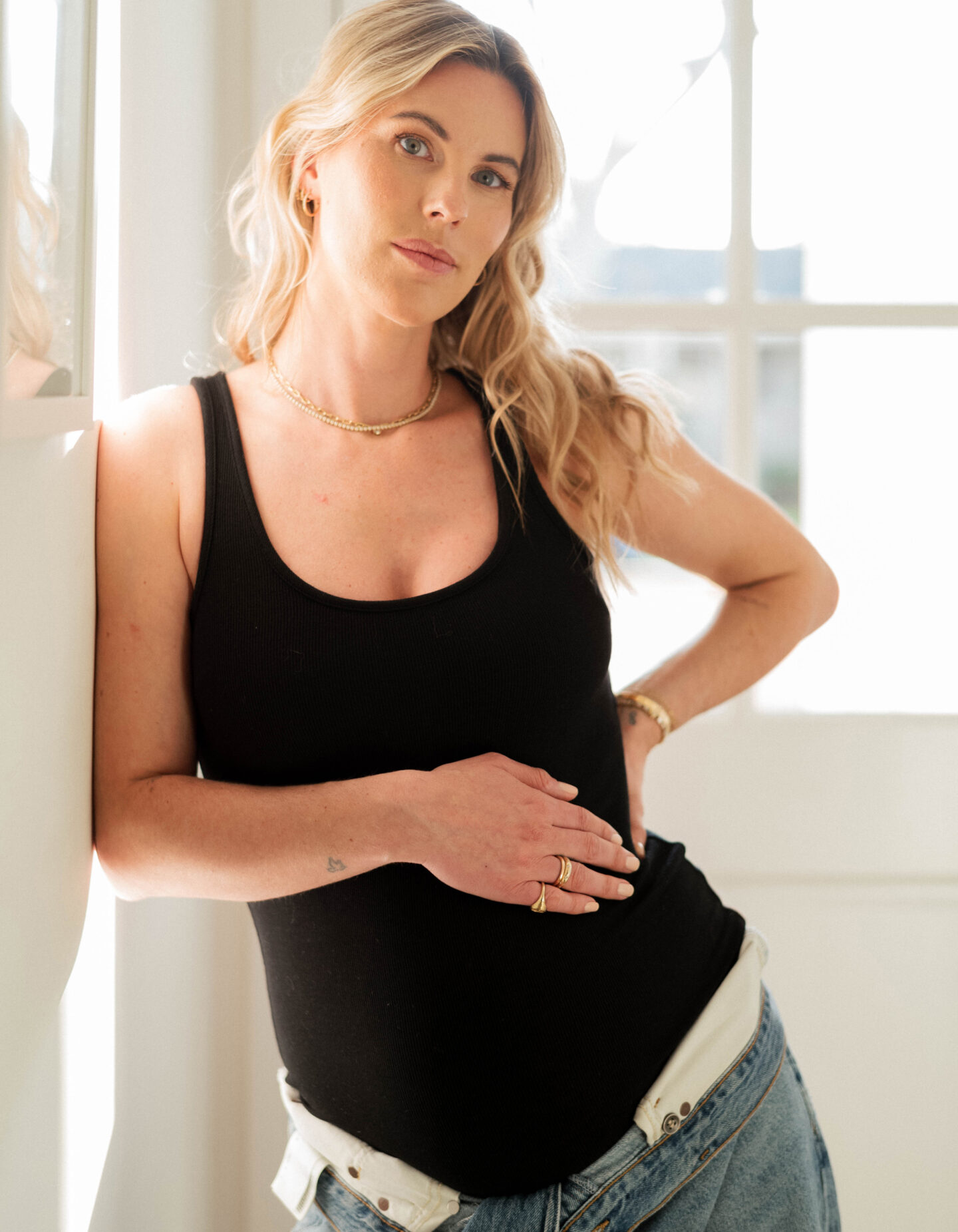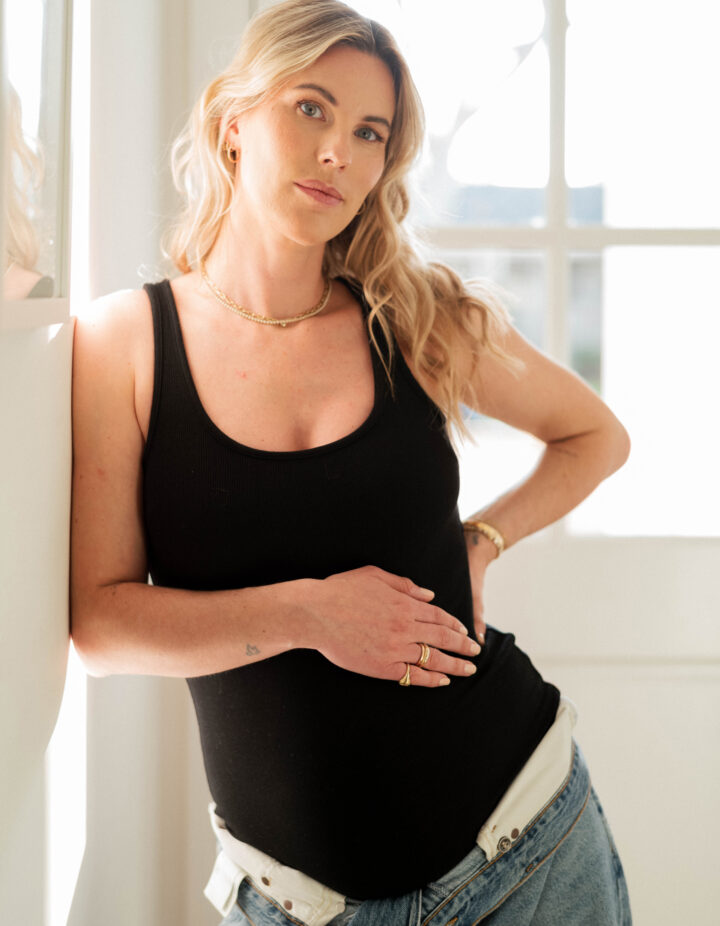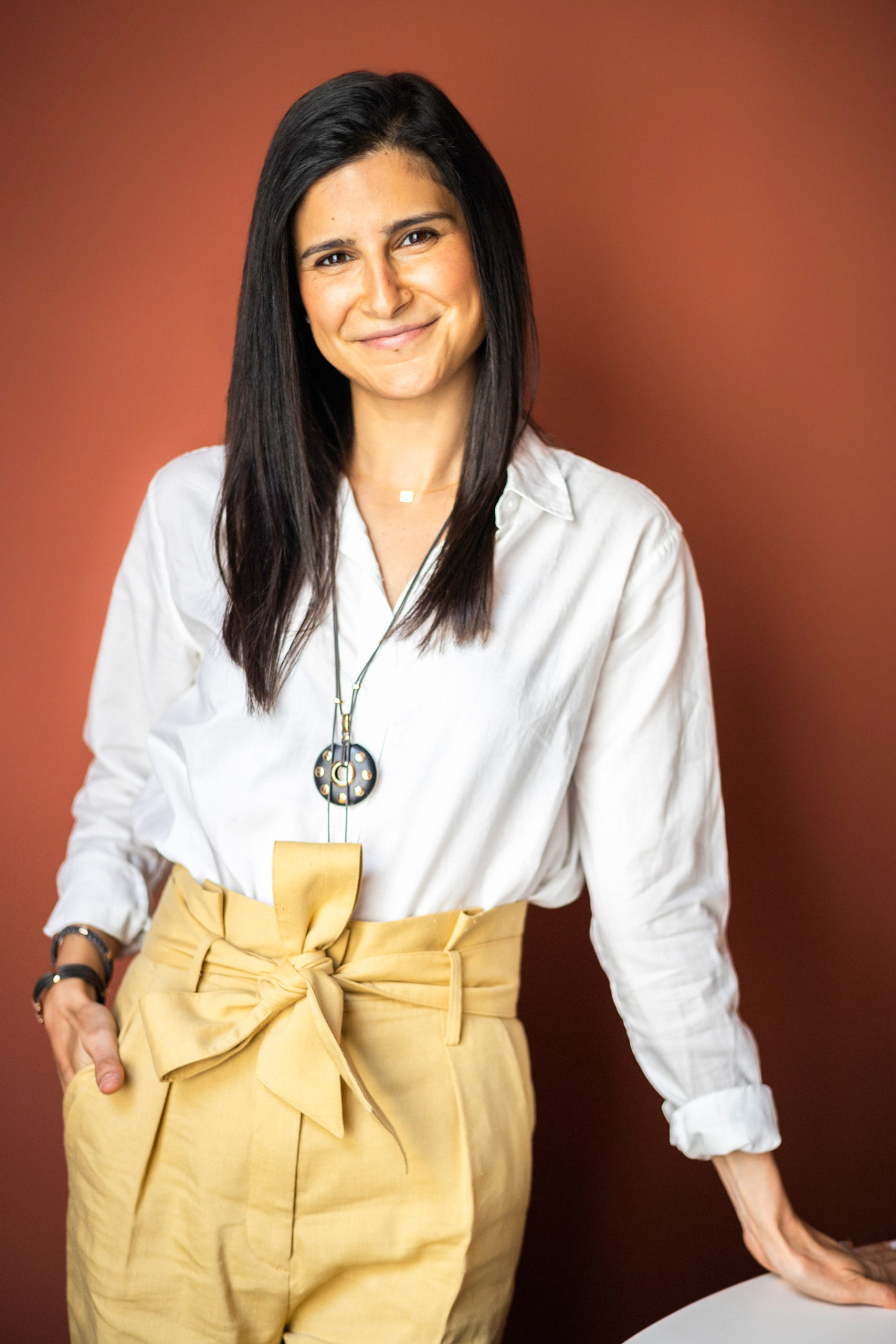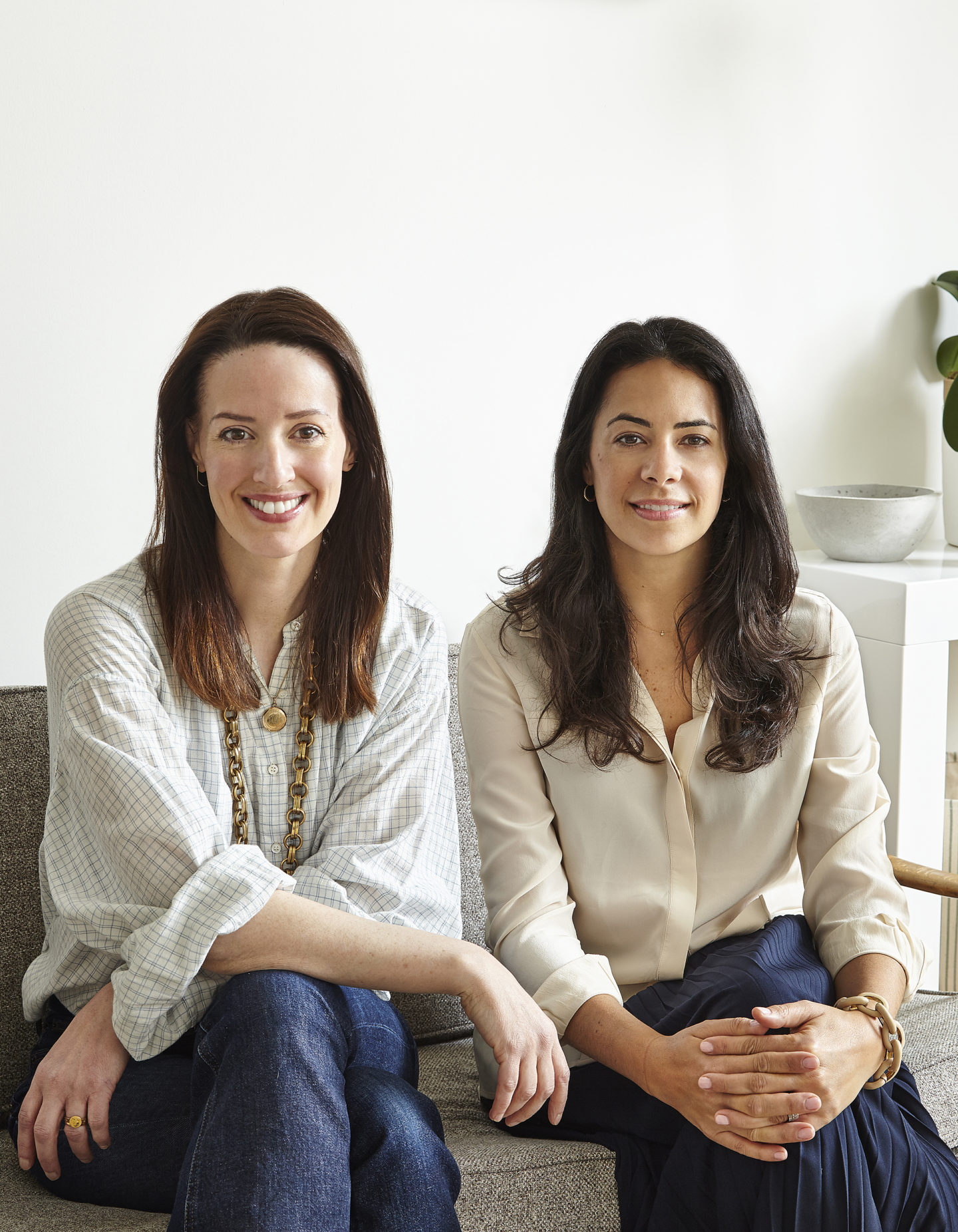If you would have told me five years ago that I’d be approaching my 35th birthday after a full year of infertility treatments, I wouldn’t have believed you. So how did I get here?
Let’s start with Thanksgiving weekend, 2020. Peak Covid. My four-month old son Ryland was finally sleeping through the night and it felt as if the worst of my postpartum anxiety had subsided. I lost my mother to cancer in early 2020, and the loss didn’t fully catch up to me until after my son was born. Transparently, the first few months postpartum hit me hard, and quarantining at home during COVID did not help the situation. I was finally starting to feel like myself again, and ready to spend time with friends and family.
That Friday, my husband Adrian and I took Ryland for a stroll around our neighborhood. That’s when I started to notice a sharp pain in my lower abdomen. I didn’t think much of it, chalked it up to menstrual cramps (was I finally getting my period again?) and powered through the rest of our walk. That night we went to dinner with friends and left making plans to decorate our Christmas tree over cocktails the following afternoon.
After Ryland was asleep, Adrian and I both got into bed, exhausted from our first day out of the house in quite some time. I was having trouble sleeping — the pain in my lower abdomen only seemed to be getting worse. Finally around midnight I dozed off only to wake up 30 minutes later in debilitating pain that left me in a ball on my bathroom floor crying for help. I knew I needed to go to the hospital, but with a newborn at home and overwhelmed hospitals due to COVID cases, I decided to muster up the strength to drive myself to the nearest ER.
Thankfully, the ER was a ghost town, I was the only one in the waiting room and was immediately brought back to be examined. After some initial tests, I learned I had an Ovarian Torsion, where my fallopian tube had wrapped itself around my ovary three times and was cutting off all blood flow. The surgical team needed to operate immediately so that I didn’t lose one of my ovaries. The surgery was successful – the team performed a laparoscopic paratubal cystectomy – and I was told after a week of bed rest that I would make a full recovery.
“I had an Ovarian Torsion, where my fallopian tube had wrapped itself around my ovary three times and was cutting off all blood flow.”
Flash forward seven months to summer 2021. We were ready to start trying for baby number two. Because I had no issues getting pregnant with Ryland, I assumed I would have no issues with a second pregnancy – even after my Ovarian Torsion surgery. But month after month, I became increasingly disappointed that I was still not pregnant. What was wrong? I was tracking my cycles religiously and taking all the recommended supplements.
Finally, in early 2022, I decided to advocate for myself and reach out to a dear friend who had recently gone through her own infertility journey and was very knowledgeable about doctors in the infertility space. She referred me to the amazing team at Southern California Reproductive Center, and after my first visit with Dr. Surrey and his team, I knew I was in good hands. However, what I didn’t know was that my journey was only just beginning.
Dr. Surrey reviewed my medical history and suggested we start with an HSG test. An HSG is typically performed to assess subfertility/infertility or recurrent miscarriages. Its primary objective is to detect any obstruction in the fallopian tubes. Fortunately, my test results came back normal and we were able to quickly rule out any tube scarring from my surgery as the issue.
As a next step, Dr. Surrey suggested we give timed intercourse a try. “Timed intercourse” is exactly as it sounds – timing your intercourse around your most fertile window. Once I started my menstrual cycle, I had several ultrasound appointments in a period of about two weeks to make sure we were timing my ovulation properly. Then, once my tests showed I was almost ready to ovulate I was given a “trigger shot” and told to give the old fashioned way a go.
For the next ten days, I would patiently wait to see if I was pregnant. To my dismay, my menstrual cycle started again like clockwork. We tried this again the following month with the same disappointing results.
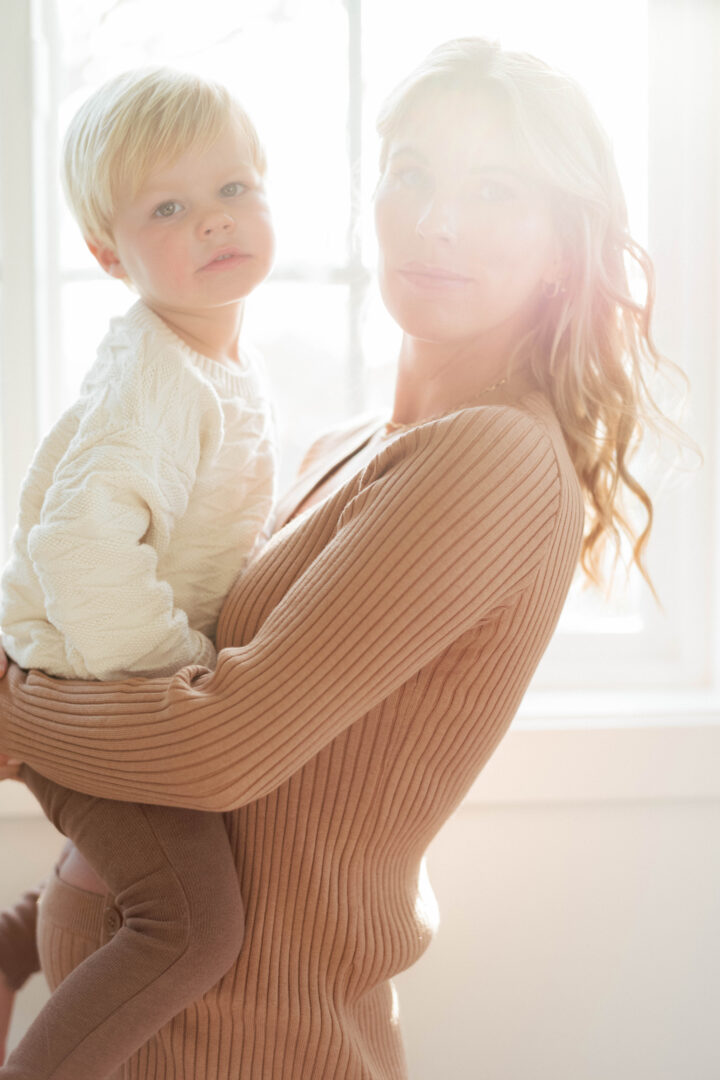
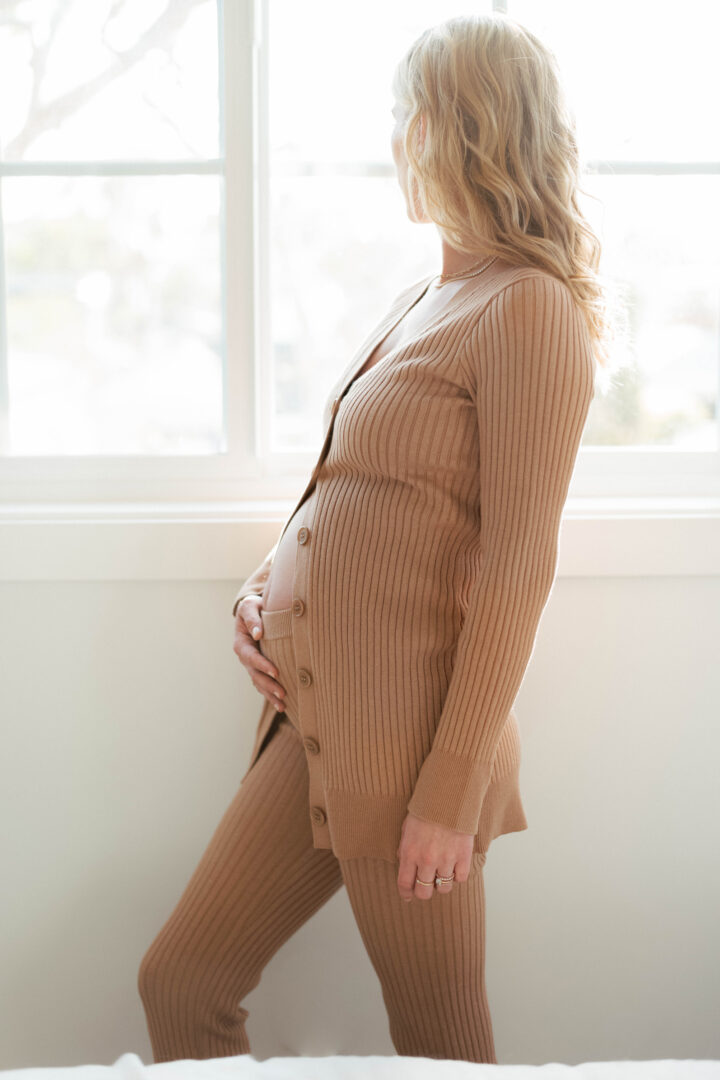
As the next resort, we decided to give IUI a try. Intrauterine insemination (IUI) is a fertility procedure that involves the direct placement of sperm into a woman’s uterus. In natural conception, sperm must travel from the vagina through the cervix, into the uterus, and eventually reach the fallopian tubes. By contrast, during IUI, the sperm are first “washed” and concentrated before being deposited directly into the uterus, thereby increasing their proximity to the egg. IUI is considered a relatively inexpensive and minimally invasive fertility treatment option when compared to more costly and invasive alternatives like IVF. Once again, I found myself at a loss when my menstrual cycle started again the next month.
By April I was diagnosed with unexplained infertility and decided to move forward with IVF. For those less familiar with the IVF process, it is separated into two stages: the egg retrieval and the embryo transfer.
Buckle up, because it’s time for the science lesson portion of this story.
First up: the egg retrieval prep. IVF typically begins with several weeks of fertility medications that induce ovulation and mature multiple eggs. Throughout this process, you go in for regular monitoring via ultrasound and blood tests before having a minor surgical procedure where the eggs are then retrieved. The eggs then go to a lab where they’re mixed with sperm and fertilized.
I typically don’t have a fear of needles, although I didn’t have much practice injecting myself before this, and the fertility medications didn’t bother me much, so the retrieval process felt pretty manageable. (I’m sure if you asked my close friends and family they would say there were definitely some mood swings and “crazy” moments), but overall I felt fortunate it wasn’t too overwhelming.
Going into my retrieval procedure, I was told that I had 21 eggs. Of those 21, 18 had matured. Of the 18 mature eggs, 10 fertilized. Of the 10 that fertilized, one became a blastocyst, which meant that I then had a 50/50 chance of that one blastocyst passing pre-genetic screening (meaning the embryo has all of its chromosomes). I left the doctors office that day feeling sad, confused, frustrated, lonely and hopeful all at the same time.
What I wish I had known going into my first retrieval is that attrition is NORMAL. (IVF attrition is the rate at which embryos lose viability once they are in the lab and growing).
Instead of stressing over the numbers each step of the way, I needed to change my mindset to focus on having ONE healthy embryo per egg retrieval round and spend my energy on the things I could control like exercising, eating well, connecting with my partner, and taking good care of my emotions and mental health.
A few days later, I received a call from Dr. Surrey with the news. I “ripped off the bandaid” and answered the phone. It was good news. My embryo was normal. It felt like the weight of the world was lifted off my shoulders and in that moment I was so grateful for my one healthy embryo.
After the retrieval, I wanted to take some time to reset and enjoy the summer. I decided to take a few months to try the “natural” way again without all the doctors appointments and fertility medications. IVF, no matter what stage, takes a toll on both your body and your mind. Not to mention, I was juggling running a business and taking care of my toddler through it all. I was exhausted — both physically and emotionally. If necessary, we would pick things back up in the fall.
Summer came and went and when September arrived and I was still not pregnant, I decided it was time to move forward with another egg retrieval before we transferred. Why another egg retrieval? Ultimately, I didn’t feel comfortable not having an “embryo on ice” if anything were to go wrong with our one and only genetically normal blastocyst. (2020 SART Data shows that first embryo transfers at SCRC had an approximate 80% positive pregnancy success rate and a 62% live birth success rate in women under 35 — in other words, there were no guarantees).
I entered my second retrieval with a positive outlook. I had cut back on drinking in the months leading up, changed my diet, and most importantly, changed my mindset. The 14 days of stims felt like they flew by. I was on a first name basis with most of the nurses and Dr. Surrey was pleased with how my eggs were maturing.
Going into my second retrieval, I had 18 eggs for possible harvest. Of the 18, 9 matured. Of the 9, 6 fertilized and 2 became blastocysts (untested). I was cautiously optimistic – this time I had two chances for a healthy, genetically normal embryo. And like clockwork, a few days later I received a call from Dr. Surrey with the news. One of my two embryos had come back normal. We were ready to move on to the transfer stage.
Before we moved forward with our frozen embryo transfer, I chose to do a “mock” embryo transfer. The mock transfer serves as a practice run for the real embryo transfer. Its purpose is to assist the doctor in identifying the optimal path to guide the embryo to the ideal location in your uterus. Additionally, it measures the distance from the cervix to the target location and ensures that no unforeseen obstacles will hinder the transfer, such as undetected scar tissue on the cervix. Because of my previous surgery and the fact that I had just 2 embryos on ice, I decided the potential benefits outweighed the costs associated.
My mock trial came back normal (phew!) and we were ready for the actual transfer. The timeline leading up to the transfer was just a few weeks of prep – I gave myself daily injections to optimize the lining of my uterus for implantation. After prep was complete, it was time to thaw one of my frozen embryos and transfer into my uterus. Transfer day went smoothly. I left the clinic feeling at peace and was told to stay in bed for several days, watch movies that made me laugh, and just relax. No heavy lifting.
Then, the infamous “two week wait.” Was I pregnant?
2 Timed Intercourses, 1 IUI, 2 Egg retrievals, 1 Mock Trial, 1 FET, over 120 injections, too many suppositories to count, 42 acupuncture sessions and 90 doctor’s appointments later — I am over the moon to say that I am finally pregnant with a baby girl due this summer.
While my causes for infertility are still largely unexplained, I feel fortunate that I came out of this with a positive outcome in just one year of treatments, while I recognize others may still be manifesting motherhood after much longer. I also feel immense gratitude and privilege that I had the means to afford these treatments and that I have such a supportive community to guide me through it all. No matter your timeline, anyone who goes through infertility is a warrior.
To all my IVF warriors out there, you are not alone. Keep going. Have faith in your journey and trust in yourself because one day you too will get there. No journey is the same but they are all equally important.
